Peak Season Preparedness: PaKing 3PL Best Practices
Peak season is the most critical time for retailers and e‑commerce businesses. For 3PL (Third-Party Logistics) providers, it’s essential to be fully prepared to handle the surge in demand. The stakes are high, and effective peak season preparedness can make or break the success of a business during events like Black Friday and the holiday season. This article will delve into the best practices for 3PL providers to ensure seamless operations, customer satisfaction, and maximized profits during peak season.
1. Understanding Peak Season Dynamics
Peak season typically spans from November to January, encompassing major shopping events such as Black Friday, Cyber Monday, and the Christmas shopping rush. During this time, consumer demand skyrockets, and businesses must be ready to meet the increased volume of orders. For 3PL providers, this means having robust systems and processes in place to handle the surge efficiently.
2. Start Preparations 4 Weeks in Advance
Preparation is key to successful peak season management. Begin preparations at least four weeks before the peak season to ensure that all aspects of your operation are ready. This involves inventory management, workforce planning, technology readiness, and contingency planning. Early preparation allows for smooth transitions and minimizes the risk of disruptions.
3. Inventory Management
Effective inventory management is crucial during peak season. Here are some best practices to follow:
- Forecast Demand Accurately: Use historical data and market trends to predict demand. This will help you stock the right amount of inventory and avoid both stockouts and overstocking.
- Increase Inventory Levels: Ensure that you have enough stock to meet the anticipated demand. Collaborate with your suppliers to secure necessary inventory well in advance.
- Organize Your Warehouse: Optimize your warehouse layout for efficient picking and packing. Group high-demand items together and ensure that frequently ordered products are easily accessible.
4. Workforce Planning
Your workforce is the backbone of your operations during peak season. To ensure you have adequate staffing:
- Hire Temporary Workers: Increase your workforce by hiring temporary workers. Make sure to provide proper training and onboarding to maintain productivity and quality.
- Schedule Smartly: Implement flexible scheduling to cover peak times and avoid burnout among employees. Consider offering incentives for overtime work to encourage commitment.
- Enhance Training Programs: Provide training focused on peak season operations. Emphasize efficiency, accuracy, and customer service to meet heightened demands.
5. Technology Readiness
Leverage technology to streamline your operations during peak season:
- Upgrade Your Systems: Ensure that your warehouse management system (WMS) and other critical software are up-to-date and capable of handling increased volume.
- Implement Automation: Use automation tools to enhance efficiency. Automated sorting, picking, and packing systems can significantly speed up operations and reduce errors.
- Monitor Systems Continuously: Keep a close watch on your systems to identify and resolve any issues promptly. Regular maintenance and updates are essential to avoid downtime.
6. Enhance Communication
Clear and effective communication is vital during peak season:
- Coordinate with Clients: Keep your clients informed about your preparations and any changes in processes. Clear communication helps manage expectations and fosters trust.
- Internal Communication: Ensure that all team members are on the same page. Regular meetings and updates help maintain alignment and address any concerns promptly.
- Customer Communication: Provide customers with accurate and timely information regarding their orders. Use multiple channels such as email, SMS, and social media to keep them updated.
7. Streamline Order Fulfillment
Efficient order fulfillment is crucial for meeting customer expectations:
- Optimize Picking and Packing: Use efficient picking and packing methods to speed up order processing. Implement batch picking and consider zone picking to reduce travel time within the warehouse.
- Prioritize Orders: Use a priority system to handle urgent orders first. This ensures that high-priority orders are fulfilled on time.
- Double-Check Orders: Implement a quality control step to double-check orders before shipping. This minimizes errors and enhances customer satisfaction.
8. Shipping and Logistics
Shipping and logistics are pivotal during peak season:
- Partner with Reliable Carriers: Collaborate with multiple carriers to ensure flexibility and reliability. Diversifying your shipping options can help mitigate delays and disruptions.
- Optimize Shipping Routes: Use route optimization tools to plan the most efficient delivery routes. This can save time and reduce shipping costs.
- Track Shipments: Provide real-time tracking information to customers. Transparency in shipping enhances customer trust and satisfaction.
9. Implement Contingency Plans
Prepare for unexpected challenges with robust contingency plans:
- Identify Potential Risks: Analyze potential risks such as supply chain disruptions, technology failures, or natural disasters. Develop plans to address these risks.
- Develop Backup Plans: Have backup plans for critical operations. This might include alternative suppliers, backup systems, and emergency staffing arrangements.
- Conduct Regular Drills: Test your contingency plans through regular drills. This ensures that your team knows how to respond effectively in case of an emergency.
10. Analyze and Improve
Post-peak season, take time to analyze your performance and identify areas for improvement:
- Collect Data: Gather data on key metrics such as order volume, fulfillment times, and customer satisfaction.
- Evaluate Performance: Assess how well your strategies worked and identify any shortcomings. Solicit feedback from your team and clients.
- Implement Improvements: Use the insights gained to refine your processes and prepare for the next peak season. Continuous improvement is key to long-term success.
Peak season presents both opportunities and challenges for 3PL providers. By starting preparations early, managing inventory effectively, planning your workforce, leveraging technology, and maintaining clear communication, you can navigate the peak season successfully. Implementing these best practices will help you handle increased demand, ensure customer satisfaction, and maximize your profits. Remember, the key to success lies in thorough preparation and continuous improvement. Stay proactive, stay prepared, and make the most of the peak season!

